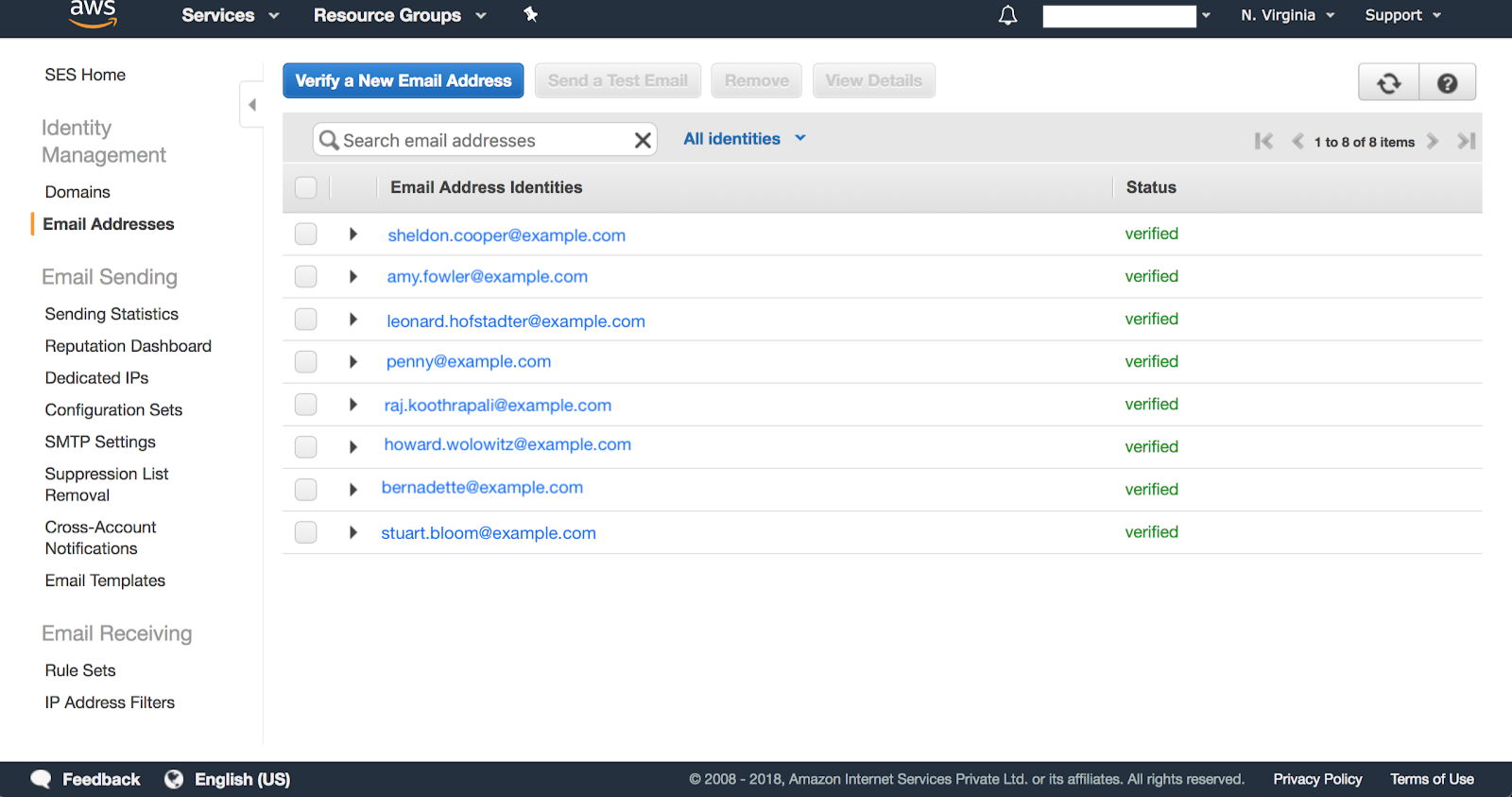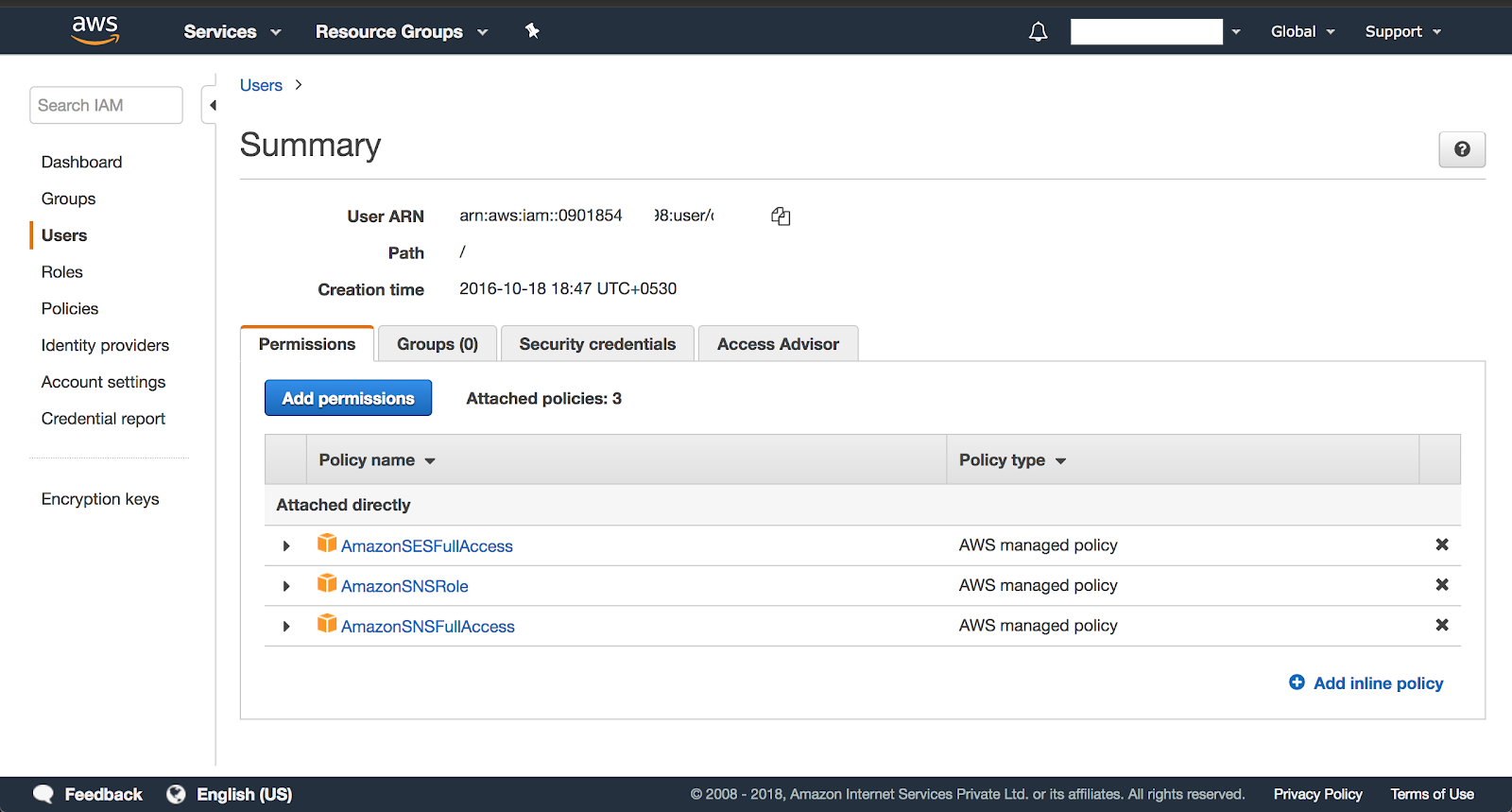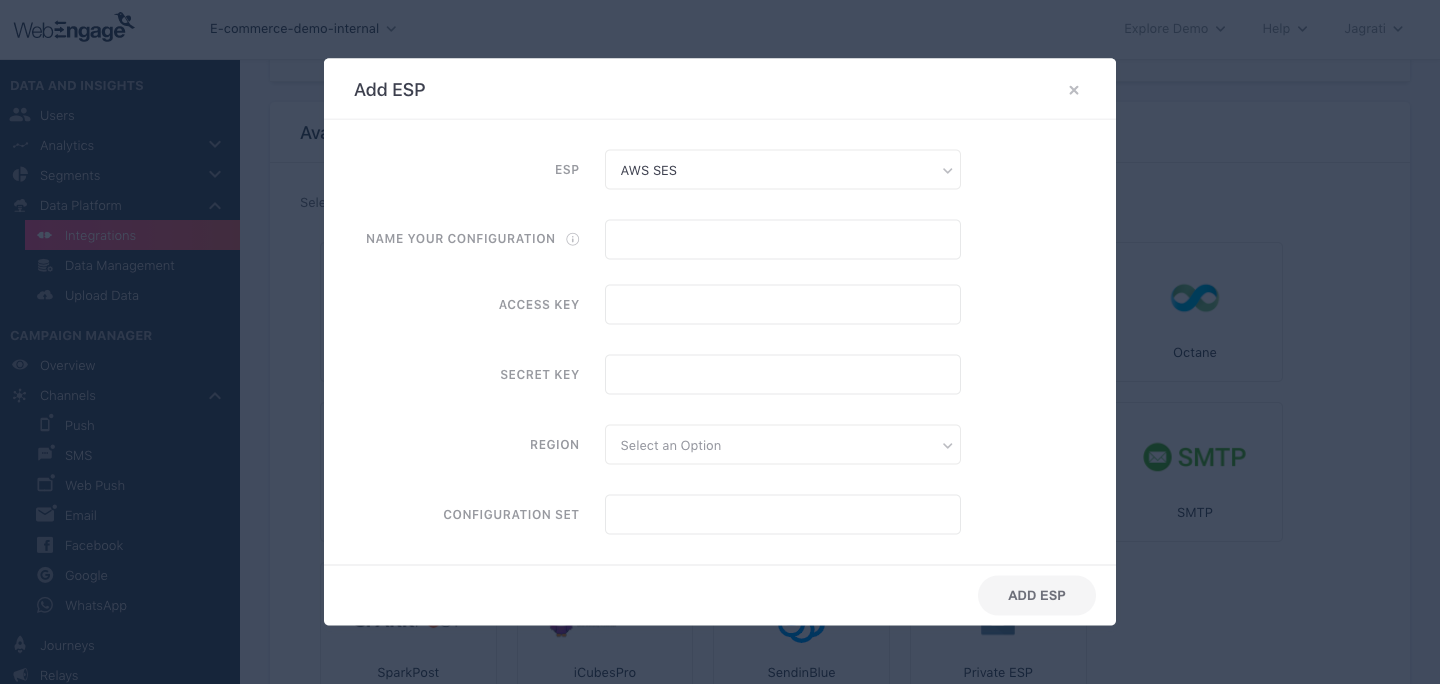AWS SES
Prerequisites
Please ensure that the following settings are in place before you integrate your AWS SES account with WebEngage:
1. From Email/Domain Verification
As shown below, navigate to Domains > Email Addresses in your AWS SES dashboard and verify all the Sender IDs you'll be using for email marketing.

Click to enlarge
Further, please avoid using your AWS SES account in Sandbox Mode while integrating it with WebEngage. If it's absolutely necessary to do so, then please ensure that the recipient address is also verified.
2. Credential Permissions
As shown below, please provide the following permissions to WebEngage for your account credentials.

3. Message Send Rate Settings
As shown below, navigate to your AWS SES dashboard's Support Center > Create Case to request that they increase the send rate to 2500 emails/second. Doing so will ensure better throughput.

4. Using Dedicated IPs to Send Emails (Optional)
If your email marketing strategy entails sending high volumes of emails to thousands of subscribers, then we highly recommend that you create and use a dedicated IP (other than your actual business domain) to do so. You can easily use this IP for sending email campaigns through WebEngage by:
Step 1: Creating a Configuration Set in your AWS SES account.
Step 2: Mapping the dedicated email marketing IP(s) to that Configuration Set.
As shown below, this can be done by navigating to Email Sending > Configuration Sets > Create Configuration Set in your AWS SES dashboard.

Now, let's show you how you can configure AWS SES as an ESP in your WebEngage dashboard.
Configuration

As shown above:
Step 1: Select ESP
Select AWS SES from the List of Available ESPs. In doing so, you will be prompted by a configuration modal.
Step 2: Name your Configuration
Please add a user-friendly name that enables you to identify the right ESP for a campaign while creating it. This comes in handy especially, when you have multiple accounts with the same ESP for sending different types of campaigns (Transactional/ Promotional).
For example, if you have configured an AWS SES account for sending transactional campaigns, then you can name the configuration:
- AWS Transactional
- AWS SES T
Step 3: Add Credentials
Navigate to your AWS SES dashboard to find and copy your Access Key and Secret Key. Paste them in the configuration modal.
Step 4: Add Region
Please specify the same Region as the one used for configuring the From Email/Domain in your AWS SES dashboard. A mismatch between the two may cause configuration failure.
Step 5 (Optional): Add Configuration Set
In case you're using dedicated IPs for email marketing, then we recommend that you [follow these steps to create a Configuration Set in yourAWS SES dashboard](aws-ses#4-using-dedicated-ips-to-send-emails-optional) and enter its name in this field.
Step 6: Add ESP
Click Add ESP, and you're good to go!
Congratulations!You've now successfully integrated AWS SES with your WebEngage dashboard.
You can test the integration by creating a test Email campaign and sending it to a group of internal users (aka your teammates).
Please feel free to drop in a few lines at [email protected] in case you have any further queries or feedback. We're always just an email away!
Updated about 2 months ago